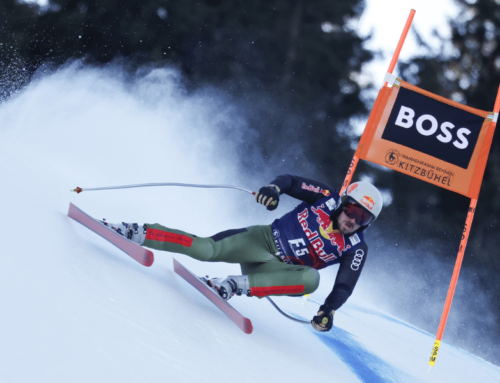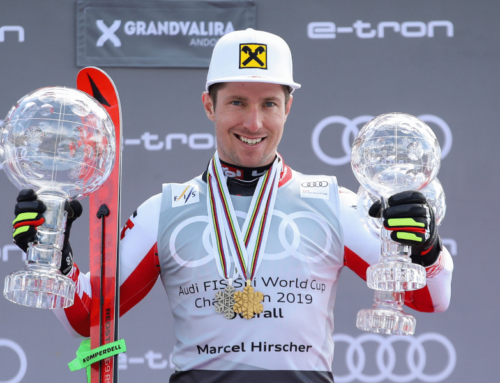There have never been more questions ahead of Soelden
Soelden has always represented something of a premature start to the Alpine World Cup season. This year, it’s a week earlier than normal due to covid reshuffling. There are those who look at this as a warm-up race with enough time to recalibrate and regroup ahead of the next series of contests. The obvious exceptions are the GS specialists and title-hunters who need to be sharp from day one. But this year, is there more merit to blasting out of the blocks when you don’t quite know how far off the finish is? Like many in this time, I have more questions than answers.
In 2020, amid the pandemic, there may never have been more questions ahead of the opening race. Who was affected most by the lack of training and travel opportunities over the summer? Who was affected least? How will the schedule be affected? Will we even make it to the end of the season?
Measured expectations for the U.S.
The North Americans are likely at a distinct disadvantage. Not being able to travel to South America and New Zealand stings a bit more when you don’t have multiple glaciers in your backyard. If that’s going to be felt, it will be felt early. Tommy Ford, coming off a mountain bike accident over the summer, has only a few days of training under his belt apart from a couple weeks late spring. Ted Ligety showed impressive pace training at Mount Hood, but along with his teammates, hasn’t been able to fine tune due to poor glacier conditions since their arrival a couple weeks back. Like no other, he has the ability to race above his training level, and he’s a beast in Soelden. So there is that. Ryan Cochran-Seigle, who has migrated more into speed, has been on a forced diet of GS because of covid. Come the weekend we’ll see if his storied GS speed has returned or the recent dearth of good training rules the day.

The U.S. men’s results from last year were epic — fourth, fifth and 11th. If I’m a betting man, we are not going to see that again, and that’s in large part due to the disparity in training opportunities. Unfortunately, the Americans arrived in Europe this fall just as the weather went south. They didn’t nearly get the quality or volume of training that the Europeans enjoyed in September, particularly the Swiss.
More urgency in a covid world
The reality is, no one knows what’s going to happen this season with covid. Is it outside the realm of possibility that the World Cup could get shut down? Absolutely not. Could there be a mid-season pause or truncation? No one knows. This makes these early races, maybe every race, much more critical. You need to come out swinging and whoever holds the red bib early, there is value in that like never before because you can’t be sure the season won’t end early.
For the Europeans I’ve been speaking with, the season may be a marathon, but they’re coming out running 1500-meter pace.
What about the all-rounders?
One of the things I always look for at Soelden is how many of the all-rounders come out, and how do they look? Dominik Paris, Matthias Meyer, Kriechmayr, Jansrud, Kilde. Are these guys all entering, and what do they look like? That will tell us a little bit about how the year is going to go in the overall and whether speed skiers can again make a play for the title.

This year, I would imagine you’re going to have some of these speed skiers looking pretty good in GS because that’s what’s been most available to them for training.
Men’s picks?
With the men’s GS, there are the obvious ones. Last year, Pinturault was so good in Soelden, I was certain he was going to win the GS title, but he had some lapses most title winners don’t. I still think he’s the guy to beat this weekend. He’s fresh — and that seemed to be one thing that came between him and winning late in the season last year.

Other guys to look out for (aside from the usual suspects), Marco Odermatt, who packed on some weight over the summer, has never trained or worked so hard since his mid-season injury last year.
Soelden is particularly stingy with high start numbers positions — steep, poor light and usually rough. But look at a guy like Lucas Braathen — who last year defied that disadvantage on a course that isn’t particularly friendly to the younger generation. He had everything going against him and won the second run by a significant margin and jumped to 6th with bib 40.
Also look for Kristoffersen and Haugen, both Rossi skiers, who found their skis and setup hyper reactive on the unexpectedly high-grip conditions in 2019. You know the saying, fool me once …
Women
Giant slalom has been the most competitive discipline on the women’s side, if not in all of World Cup skiing. In the past, I can recall there being as many as 11 World Cup winners in the start at Soelden … but we’ve lost some of those people.
With the exception of Brignone and Worley, now in their 30s, the contenders are 26 or younger. So now the skier we’ve long considered the young phenom, Mikaela Shiffrin (who is not racing, of course), skews old. So, you can see the guard is changing.

Kiwi edge?
Last year’s winner Alice Robinson, a New Zealand native, has probably had the most favorable off-season of anyone on the tour. She enjoyed an endless winter and was quarantined in the snow zone. How sweet is that? The flip side is that she was isolated from her coaches for much of that. Surely a challenge when you’re talking about a professional athlete still in her teens.

Vlhova’s been nonstop
Petra Vlhova has not missed a beat this off-season. From the moment the season prematurely ended last year, she has been training. Initially, her home resort of Jasna was opened just for her and two coaches — the max groups size allowed in Slovakia at that time. She’s added more speed training too. According to her coach, the plan is to hit Soelden at full stride and, particularly early, enter every race on the calendar. She is coming off a rather disastrous opener last year in Soelden. I don’t see that happening again.
In general
Let’s watch for youth. Let’s turn our attention back to the Norwegian women, who on this particular hill—a scrappers’ hill—they can be very dangerous, and were. Keep an eye out for their youngest, Kaja Norbye.
For the U.S., watch out for Paula Moltzan. Slalom specialist no longer? She’s been consistently fast in training, but has to battle from a high number. And Nina O’brien, who had a GS breakthrough in Soelden last year, has also shown good October pace.
It should not be missed, and surely hasn’t been in the Oetztal Valley, that the Austrians have not won on this hill since 2014, men or women, which has been an exercise in monumental patience on the part of the host nation. That there will be no fans might just be the breathing room their skiers need.





















